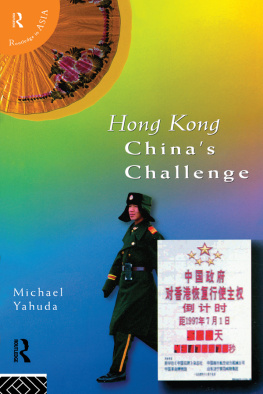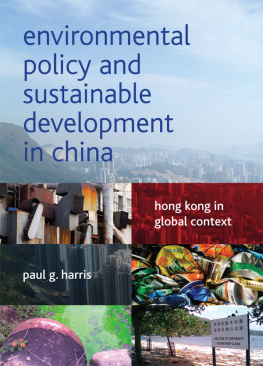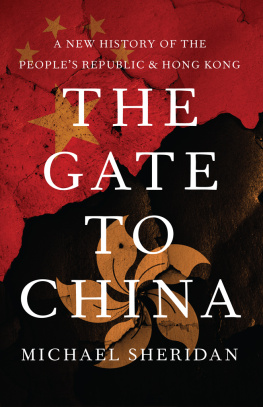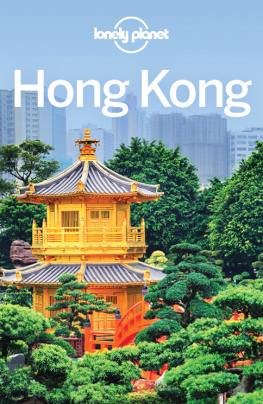Translators Note

Kong Ergous novel is a depiction of a specific time and place: northern China in the last half of the 1980s. These were the prime years of Deng Xiaopings Reform and Opening policy, when China was opening to the outside world and individuals were breaking off from the collective and finding a new place in Chinese society. Although inconvenient for a Chinese author to mention, these were also the years when popular discontent with corruption and yearnings for democracy gradually led to mass protests culminating in the violent official crackdown in June 1989, which sent China off in a new direction.
In depicting this milieu, Kong Ergous novel includes frequent references to popular culture. Writing twenty years after the events in this book, the narrator Ergou reflects the eventual influence of Hong Kong culture on urban mainland China, mainly through comic books, the martial arts ( wuxia ) novels of Louis Cha (writing as Jin Yong) and the movies and television series based on them TV series like The Bund , set in Shanghais gang world in the 1920s, and gangster films by directors like John Woo , all depicting a romanticized version of the underworld, past and present. Japanese culture imprinted itself on a generation of Chinese youth through electronic games and manga depicting the traditions of samurai and ronin . The protagonists of this book, however, still live in a world of strict film embargoes and without access even to television and video tapes, much less to the eventually ubiquitous video compact disc (VCD) and DVD players and pirated films from Hong Kong and further afield. Their cultural influences are pop songs, pulp kungfu novels and the occasional kungfu movie, as well as classical novels like The Water Margin and traditional tales of ghosts and fox fairies.
I believe that readers can enjoy this novel without understanding all these cultural references, so Ive chosen to let them stand without the annoyance of footnotes or elaboration that would be as counterproductive as a drawn-out explanation of the punchline to a joke. Rather, Ive used English versions of names and titles that can be looked up on Google, Wikipedia, or imdb.com by readers who desire a deeper understanding of the popular culture of this period.
Finally, for readers who are fond of old media and who wish to better understand the traditional roots of Chinas modern underworld, I recommend The Chinese Knight-Errant , by James J. Y. Liu (Routledge & Kegan Paul Ltd, 1967), which is sadly out of print. Its passage on Knights-errant and Mohists (pp. 10-12) is echoed at the end of this novel:
The knights-errant and the Mohists, the followers of Mo Tzu , whose life span fell between 479 and 381 B.C. and who preached universal love, obviously had much in common. Indeed, it has been suggested by Professor Feng Yu-lan that the Mohists originated from the knights-errant. His theory may be summarized as follows. After the collapse of aristocratic government about the time of Confucius (551-479 B.C.), a new class of professional men came into being, known as the shih . At first this word simply meant any man of special talent or skill, and such men were kept by the aristocracy. After they lost their employment, they became what we may call free lances. Those who specialized in ritual, music and education were the scholars ( ju ), of whom Confucius was one, and their moral code developed into Confucianism ( Ju-chia , literally, scholasticism). Those who specialized in warfare were the knights ( hsia ), and their moral code developed into Mohism . Both were inspired by an altruistic spirit and a strong sense of justice, and both acted on a universalistic principle, as against the Confucian principle of degrees of love and duty. Both belittled wealth and shared what they had. Both were absolutely truthful and trustworthy.
On the other hand, there are considerable differences between the two... The Mohists led an austere and disciplined life; the knights-errant were often free and easy. The Mohists were a highly-organized body of men, whose leader had the authority of life and death over the members; the knights-errant were only loosely associated on a voluntary basis. The Mohists, though they helped weak states in self-defense, were against fighting in principle; the knights were always ready for a fight. Basically, the Mohists were concerned with political and social equity, but the knights-errant were only concerned with personal justice.
Preface

Exploring Society and Human Nature
I once read an essay by an Englishman entitled China, Land of a Thousand Identical Cities, a sentiment I heartily endorse. Most of Chinas cities were rebuilt from the post-war rubble under the historical circumstances and policies of New China, and have followed similar patterns of development. This development process has typically involved the growth of criminal gangs, which, like their host cities, share many similarities. Its safe to assume that criminal gangs like Tangshans notorious Cleaver Squad emerged in most of these one thousand identical cities in the 1980s, along with hooligan bands consisting largely of the sons of employees of massive state-owned factories. The 1990s saw the emergence of many debt collection agencies of dubious background.
I grew up in a city in northern China with a population of less than one million, and worked my way into the hard-won comfort of a white-collar existence in Shanghai. I was never involved in the criminal underworld, but an old family friend has been my hometowns generally-acknowledged Big Brother for 20 years, and I personally witnessed much of his tumultuous rise in the gang world.
I havent written this book with the intention of luring readers into a life of crime; Im sure that eighty percent of the people who finish this book will vow never to have anything to do with the criminal underworld, and I hope that some who are currently involved in the underworld, perhaps even some big brothers, will scale back their violence after reading it. This novel may turn out to be very long, perhaps as many as a million words. Although it focuses on the hooligans and criminal underworld in my hometown over the past twenty-odd years, I hope readers will see more in it than this. I hope they will see what has happened and what has changed in our country and our society over the past two decades, and how our spiritual and material existence has been transformed.
The things Im exploring are society and human nature.
While visiting this books protagonist during Spring Festival last year, I came across a photo album that could be called a living encyclopedia of the underworld. It stirred up many feelings in me. Two things were consistent in all of the photos: this Big Brother always sat in the center, and everyone in the photos wore dazzling smiles. Three things changed as the album progressed. The people in the photos were different from year to year, with some in prison, on the run, recovering in a hospital, or permanently disabled. I found that the further into the album I flipped, the more complicated the expressions in their eyes became, even though they wore the same cheerful smiles. From polyester Mao jackets to woolen versions and then to white ones, and from white shirts and crimson ties to black suits and black ties, they became increasingly fastidious about their attire. The album presented an evolutionary history of the Chinese male wardrobe.







